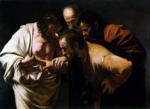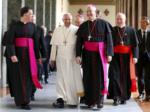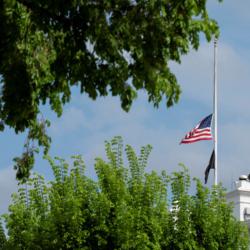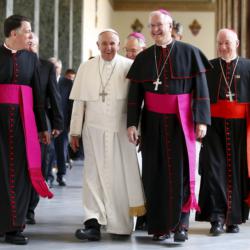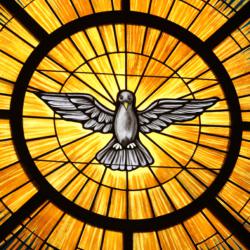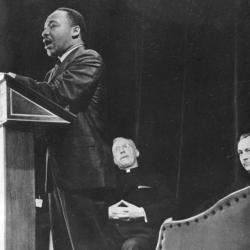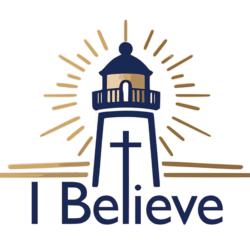Easter and its dating
In 2025, Catholic and Orthodox churches celebrate Easter on the same date, Sunday, April 20. This coincidence last occurred in 2017 and will next happen in 2028. Both churches follow the same guiding principle to calculate the date that was established at the Council of Nicaea in A.D. 325. It decreed that Easter be observed on "the first Sunday, after the first full moon, after the Spring equinox." This dating was influenced by the Jewish feast of Passover, which begins on the 15th day of the month of Nissan. Since Nissan is the first month of the Hebrew year and the calendar is lunar, Passover falls on the night of the first full moon after the Spring equinox. This year, Passover began on Saturday, April 12.
The Spring equinox -- equal hours of day and night -- falls on March 20 or 21, depending on leap years. So, if the Spring equinox falls on Friday, March 20, followed by a full moon on Saturday, March 21, the earliest possible date for Easter is on Sunday, March 22. This last happened in 1818 and will occur again in 2285. The latest date for Easter is Sunday, April 25. This last happened in 1943 and will occur again in 2048. So, if both churches follow the same basic rule, why the difference?
The Orthodox Church calculates the date based on the Julian Calendar, proposed by Julius Caesar in 44 B.C., while the Catholic Church computes the date based on the Gregorian Calendar, reformed by Pope Gregory XIII in 1572. How did this come about?
By 1800 B.C., the Babylonians had already deciphered the lunar cycle, where the moon orbits the Earth in 29.5 days, and the solar cycle, as the Earth orbits the sun in 365.2425 days. Their calendar had a 30-day month with a 12-month year, adding up to a 360-day year. A 13th month was added periodically to keep the lunar calendar synchronized with the solar year. This was implemented by duplicating the 12th month, Adar, creating Adar II. (Some traditions associate this extra month with bad luck as it was reportedly marked by the sacrifice of every firstborn person and animal born during that period, giving rise to understandable fear of the number 13 or triskaidekaphobia.) The Babylonians also had a seven-day week with the seventh day considered to be holy. Contemporary biblical scholarship dates the composition Genesis 1 with its account of creation in seven days to the period of Babylonian exile around the sixth century B.C.
To eliminate the 13th month and to account for the solar year at 365.2425 days, Julius Caesar promulgated a revised calendar with three years of 365 days and a leap year of 366, falling every fourth year. July, the seventh month of the new calendar he named after himself, a precedent repeated by his successor Caesar Augustus, who named the eighth month in his own honor. While this calendar was a significant improvement, it was still 11 minutes off each year, which added up to an extra day every 129 years, and a significant 10-day discrepancy in 1,500 years.
In 1582, the Spring equinox fell on March 11. To correct this anomaly, Pope Gregory XIII proposed that 10 full days be skipped, so Thursday, Oct. 4, was followed by Friday Oct. 15, 1582. This correction would bring the spring equinox back to its proper date, in keeping with the decree of the Council of Nicaea.
This reform was accepted immediately by Catholic countries and their overseas colonies, while many Protestant countries and their possessions were reluctant to implement this papal reform. Boston, as London, made the correction 170 years later when it was necessary to correct by 11 days so that Wednesday, Sept. 2, was followed by Thursday, Sept. 14, 1752. Over the centuries, Orthodox countries gradually moved to the Gregorian calendar for civic purposes (Greece was the last European country to adopt the reforms in 1923) but continued to compute religious festivals according to the older Julian way.
The principal reform of the Gregorian calendar is how it handles leap years. The Julian calendar adds a leap year every four years, leading to an average year length of 365.25 days. The Gregorian calendar tweaks the calculation by removing three leap years every 400 years, making the average year length 365.2425 days. This difference results in a current difference of 13 days between the two calendars. That is why Orthodox Churches celebrate Christmas on Jan. 6 based on the Julian calendar, 12 days after the Gregorian calculation of Dec. 25.
In an appendix to "Sacrosanctum Concilium," its Constitution on the Sacred Liturgy (1963), Vatican II noted that it "would not object if the feast of Easter were assigned to a particular Sunday of the Gregorian Calendar, provided that those whom it may concern, especially the brethren who are not in communion with the Apostolic See, give their assent." A common date is to be recommended as it would have significant ecumenical advantages, permitting all Christian churches, Catholic, Orthodox, and Protestant, to celebrate the Paschal Mystery at the same time. However, an "assigned date" is less attractive. Passover and Easter celebrate the gratuitous saving actions of God. Their annual celebration directed by the lunar cycle reminds us that both are divine gifts to be graciously received beyond human power and control. As we mark the 1,700th anniversary of the Council of Nicaea this year, let us work towards an agreed lunar-given date, not a fixed date, like the third Sunday of April, as has been suggested. Let the Nissan moon give light to the feasts that celebrate God's saving action among us.
MSGR. LIAM BERGIN IS A FACULTY MEMBER AT BOSTON COLLEGE AND LIVES IN RESIDENCE AT ST. BRIGID RECTORY, SOUTH BOSTON.
- MSGR. LIAM BERGIN IS PROFESSOR OF SACRAMENTAL THEOLOGY AT BOSTON COLLEGE AND A FORMER RECTOR OF THE PONTIFICAL IRISH COLLEGE AT ROME, HE IS PRIEST-IN-RESIDENCE AT GATE OF HEAVEN AND ST. BRIGID PARISHES IN SOUTH BOSTON.

